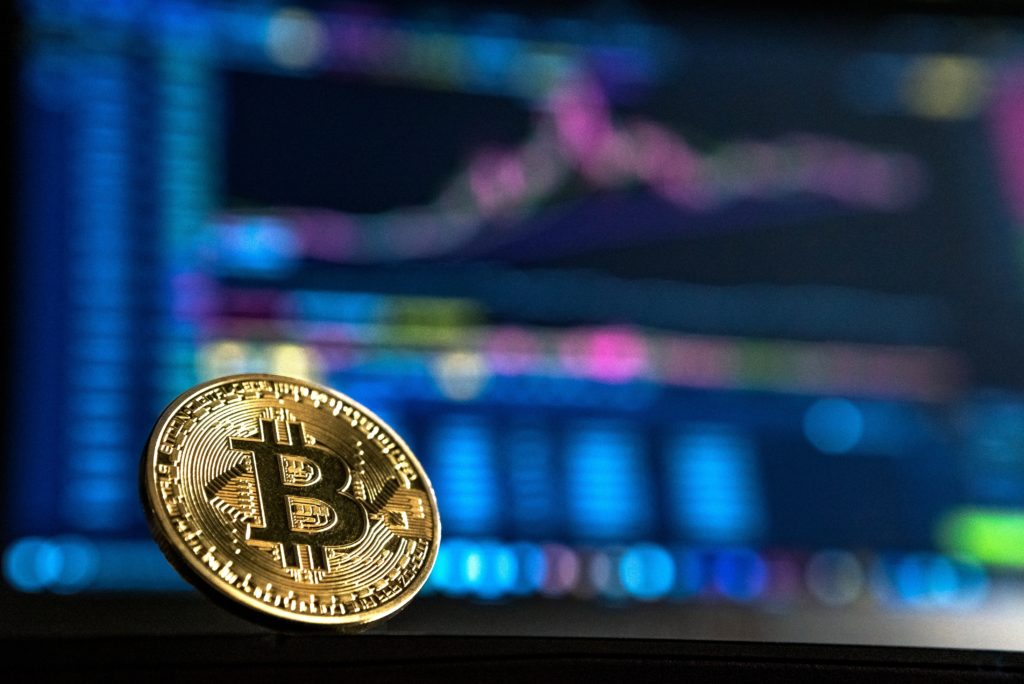Top 10 Intriguing Ways Bitcoin Crashes Spark NFT Booms (and Vice Versa)
The cryptocurrency and blockchain space is a whirlwind of innovation and volatility. Two of the hottest segments within this domain are Bitcoin, the granddaddy of digital currencies, and Non-Fungible Tokens (NFTs), unique digital assets that have exploded in popularity. But the relationship between these two isn’t as straightforward as one might think. While they share the underlying blockchain technology, their fortunes seem to operate on a curious see-saw. Understanding this interplay can be crucial for investors navigating this dynamic landscape.
Bitcoin: The Bellwether of Crypto
Bitcoin enjoys a unique position within the cryptocurrency ecosystem. Often seen as a digital store of value, its price movements tend to have a ripple effect across the broader crypto market. When Bitcoin rallies, it tends to pull other cryptocurrencies up with it, buoyed by investor confidence and a rising tide lifting all boats. Conversely, sharp Bitcoin crashes can trigger panic selling across the board, dragging down the prices of altcoins (alternative cryptocurrencies) and NFTs.
Why Bitcoin Crashes Can Spark NFT Interest
However, the relationship isn’t entirely one-sided. Interestingly, there’s evidence to suggest that Bitcoin crashes can, in some cases, trigger a surge in NFT activity. Here’s how:
-
Flight to Safety: When the price of Bitcoin tumbles, investors seeking refuge might shift their focus to assets perceived as less volatile. NFTs, particularly those tied to established franchises or artists, can be seen as offering a hedge against broader market swings.
-
Bargain Hunting: A Bitcoin crash can also be seen as an opportune moment for bargain hunters in the NFT space. With investor sentiment dampened, some may view this as a chance to scoop up NFTs at discounted prices, anticipating a rebound.
-
Disillusionment with Cryptocurrencies: A sharp Bitcoin correction can lead some investors to question the viability of cryptocurrencies altogether. However, their interest in the underlying blockchain technology and its applications might remain. This could lead them to explore NFTs, which represent a unique use case of blockchain technology beyond just currency.
Case in Point: The NFT Boom After the 2022 Crash
The crypto market crash of May 2022 serves as a fascinating case study. As Bitcoin plummeted, the NFT market, surprisingly, continued to exhibit relative strength. While there was a correction in floor prices (the minimum price at which an NFT in a collection can be purchased), sales volumes on leading NFT marketplaces remained healthy. This suggests that NFTs, at least to some degree, can act as a hedge against Bitcoin volatility.
Also, read – Bitcoin Fees Surge Ahead of Halving, Miners Look to Fees for Post-Halving Revenue
Top 10 Intriguing Ways Bitcoin Crashes Spark NFT Booms (and Vice Versa):
The relationship between Bitcoin and NFTs is a fascinating one, often described as intertwined yet independent. While both reside in the cryptocurrency space, their functionalities and target audiences differ. Surprisingly, a Bitcoin crash, instead of mirroring a similar decline in NFTs, can sometimes trigger a boom in the NFT market, and vice versa. Let’s delve into 10 intriguing ways this counter-intuitive phenomenon can occur:
-
Flight to Scarcity: When Bitcoin prices plunge, investors seeking refuge might flock to other scarce assets. NFTs, with their inherent limited supply and unique characteristics, can become attractive alternatives. This sudden surge in demand can drive up NFT prices.
-
Bargain Hunters Descend: A Bitcoin crash can entice bargain hunters into the broader crypto market. These investors, with a higher risk tolerance, might explore the NFT landscape, viewing depressed NFT prices as a good entry point. This increased participation can boost NFT sales and floor prices (minimum price for a particular NFT collection).
-
Diversification Strategies: As Bitcoin falters, investors re-evaluate their portfolios and might look to diversify their crypto holdings. This could lead them to explore NFTs as a way to spread risk and potentially capitalize on a different sector of the crypto market.
-
NFTs as a Hedge: Some investors view NFTs with strong utility (e.g., access to exclusive communities or events) as a hedge against a volatile Bitcoin market. The belief is that the underlying value of the NFT’s utility transcends short-term Bitcoin price fluctuations.
-
Shifting Market Narratives: A Bitcoin crash can trigger a shift in market narratives. Investors might lose faith in Bitcoin’s dominance and start exploring alternative blockchain applications, potentially propelling the NFT market as a result.
-
The Search for New Investment Opportunities: When Bitcoin disappoints, investors with a strong appetite for innovation might turn their attention to the ever-evolving NFT space, seeking out fresh investment opportunities within specific NFT niches like metaverse land or music rights.
-
Focus on Underlying Technology: A Bitcoin crash can refocus investor attention on the underlying blockchain technology that powers both Bitcoin and NFTs. This renewed interest in the tech’s potential could lead to a surge in NFT adoption as investors appreciate the broader applications beyond just Bitcoin.
-
Short-Term vs. Long-Term Mentality: Bitcoin crashes can disproportionately impact short-term traders focused on quick profits. Long-term NFT holders, however, might remain unfazed, believing in the long-term potential of the NFT market, creating a buying opportunity for them amidst the Bitcoin crash.
-
Media Attention Shift: A Bitcoin crash attracts significant media attention. If this coverage spills over to the NFT market, it can spark public interest and lead to new collectors entering the NFT space, fueling a buying spree.
-
Psychological Disconnect: The NFT market might be driven by different psychological factors compared to Bitcoin. While Bitcoin is often seen as a store of value, NFTs can be driven by passion (for art, music, or a particular game), community affiliation, or the desire for status symbols. These factors might remain unaffected by a Bitcoin crash.
Important Caveats:
It’s crucial to remember that the relationship between Bitcoin and NFTs is complex and not always a one-way street. While a Bitcoin crash can trigger an NFT boom in certain scenarios, the opposite can also occur. Additionally, the NFT market itself is still young and prone to volatility.
Further Exploration:
This list provides a springboard for deeper exploration. Consider researching specific instances where Bitcoin crashes coincided with NFT booms (and vice versa) to understand the nuances at play. It’s also important to stay updated on emerging trends within both the Bitcoin and NFT markets, as these can significantly influence their future interactions.
The Other Side of the Coin: When Booming NFTs Coincide with Bitcoin Slumps
The cryptocurrency world is a land of surprises, and the relationship between Bitcoin, the granddaddy of digital currencies, and NFTs, the new kids on the block, is no exception. While a Bitcoin crash can sometimes ignite an NFT boom, the reverse can also be true: a booming NFT market can leave Bitcoin in the dust. Here’s a detailed exploration of this intriguing phenomenon:
1. Profit-Taking and Portfolio Rebalancing:
- When the NFT market explodes, generating significant returns for investors, some might choose to take profits. This can lead to a flow of funds back into the broader market, potentially finding a home in more established assets like Bitcoin. However, if Bitcoin is already experiencing a slump, this influx might not be enough to reverse the downtrend.
2. Fear of Missing Out (FOMO) in NFTs:
- A surging NFT market can create a fear of missing out (FOMO) among investors. This FOMO can lead them to prioritize allocating funds to NFTs, neglecting Bitcoin or even selling their Bitcoin holdings to participate in the hottest new NFT projects.
3. Risk-On vs. Risk-Off Sentiment:
- The crypto market is susceptible to swings in risk sentiment. A booming NFT market might indicate a “risk-on” environment where investors are comfortable with higher risk ventures. This can lead to a decline in the appeal of Bitcoin, which is often seen as a relatively safe haven within the crypto space. Investors might be more inclined to chase higher potential returns in the NFT market during such times.
4. Short-Term Hype vs. Long-Term Value:
- A booming NFT market can sometimes be driven by short-term hype surrounding specific NFT collections or trends. This can overshadow the long-term value proposition of Bitcoin, leading to a temporary neglect of the dominant cryptocurrency.
5. Evolving Use Cases:
- The NFT market is constantly evolving, offering new use cases and applications beyond just digital collectibles. If these use cases gain significant traction and demonstrate real-world value, investor focus might shift towards NFTs, potentially at the expense of Bitcoin.
6. Technological Advancements in the NFT Space:
- Technological advancements specific to the NFT space, such as improved scalability solutions or the integration of NFTs with other emerging technologies like the metaverse, can boost the NFT market’s appeal relative to Bitcoin. This can lead to a situation where investors prioritize allocating funds to capitalize on these advancements.
7. Regulatory Landscape:
- Regulatory uncertainty surrounding Bitcoin can create hesitation among investors. If the NFT market, on the other hand, experiences a period of relative regulatory clarity, it can become a more attractive investment destination.
8. Community-Driven Narratives:
- Strong communities often form around specific NFT projects. The excitement and belief within these communities can create a powerful narrative that fuels the NFT market’s growth. This strong narrative might overshadow the traditional narrative surrounding Bitcoin, leading to a temporary decline in investor interest in the latter.
9. NFT Market Segmentation:
- The NFT market is not a monolith. Different segments, like utility-driven NFTs or those tied to established companies, might outperform during periods when Bitcoin is struggling. This selective investor focus on specific NFT segments can contribute to an overall NFT market boom despite a slump in Bitcoin.
10. The Broader Economic Climate:
- Macroeconomic factors can also play a role. If traditional financial markets are experiencing a downturn, investors might seek refuge in alternative assets like NFTs. This can lead to an NFT boom even if Bitcoin is not performing well.
Important Considerations:
- It’s vital to remember that the NFT market is still young and prone to volatility. Just as an NFT boom can overshadow Bitcoin, a sudden correction in the NFT market can also reverse the trend.
- The relationship between Bitcoin and NFTs is constantly evolving. Staying updated on emerging trends and developments in both markets is crucial for understanding their future interactions.
By delving into these factors, we gain a deeper understanding of the complex interplay between Bitcoin and NFTs. While a Bitcoin slump can sometimes trigger an NFT boom, the opposite scenario can also occur, highlighting the multifaceted nature of the cryptocurrency landscape.
A Complex Dance: The Intertwined Future of Bitcoin and NFTs
The cryptocurrency world is witnessing a fascinating dance between Bitcoin, the established giant, and NFTs, the dazzling newcomers. Their destinies, while seemingly independent, are intricately linked, creating a complex interplay that will shape the future of digital assets. Let’s delve into the factors that will define this intertwined future:
1. Technological Innovation:
- The ongoing evolution of blockchain technology will significantly impact both Bitcoin and NFTs. Advancements in scalability solutions like the Lightning Network for Bitcoin and layer-2 scaling for Ethereum (on which most NFTs reside) will influence transaction costs and overall usability. Additionally, the integration of NFTs with other emerging technologies like the metaverse has the potential to unlock entirely new use cases and value propositions for both asset classes.
2. Regulation and Legitimacy:
- Regulatory clarity is crucial for mainstream adoption of both Bitcoin and NFTs. As regulatory landscapes develop, it will be interesting to see how they differentiate between these asset classes. Clear and consistent regulations could pave the way for institutional investment in both Bitcoin and NFTs, potentially leading to a synchronized growth trajectory.
3. Evolving Investor Landscape:
- The investor base for both Bitcoin and NFTs is constantly evolving. As retail investor interest matures, a deeper understanding of the underlying technologies and functionalities will emerge. This could lead to a more balanced allocation between Bitcoin (seen as a store of value) and NFTs (representing a wider range of utilities and ownership rights).
4. The Rise of Security Tokens (STs):
- Security tokens (STs) represent fractionalized ownership of real-world assets like stocks, bonds, or even real estate on the blockchain. The potential for STs to bridge the gap between traditional finance and the crypto world is significant. If STs gain traction, they could act as a bridge between Bitcoin (a store of value) and utility-driven NFTs, creating a more interconnected ecosystem.
5. The Broader Adoption Curve:
- The future success of both Bitcoin and NFTs hinges on their ability to achieve broader adoption. If Bitcoin establishes itself as a widely accepted medium of exchange, it could create a more stable foundation for the NFT market to flourish. Conversely, the mainstream adoption of NFTs, particularly those tied to established brands or industries, could legitimize the entire blockchain space, potentially leading to a surge in Bitcoin adoption as well.
6. The Decentralization Debate:
- The concept of decentralization is a core tenet of the cryptocurrency space. However, with the rise of centralized NFT marketplaces and the ongoing debate surrounding Bitcoin mining centralization, the future balance between decentralization and scalability will be crucial. How this debate unfolds will influence the investment thesis for both Bitcoin and NFTs, potentially leading to periods of convergence or divergence in their popularity.
7. The Role of DAOs (Decentralized Autonomous Organizations):
- DAOs are emerging as powerful tools for community-driven governance within the crypto space. Their influence on NFT projects and potentially even future Bitcoin governance structures could create new dynamics in the relationship between these two asset classes.
8. The Environmental Impact:
- The environmental impact of Bitcoin mining has become a major concern. If Bitcoin successfully transitions to more sustainable proof-of-stake consensus mechanisms, it could improve its overall image and potentially lead to a renewed interest in the broader crypto space, benefiting NFTs as well.
A Symbiotic Relationship?
Looking ahead, the future of Bitcoin and NFTs seems to be intertwined. Technological advancements, regulatory clarity, and the evolving investor landscape will all play a role in shaping their destinies. While there will undoubtedly be periods of divergence, there is also the potential for a symbiotic relationship where the success of one fuels the growth of the other. As this complex dance unfolds, one thing is certain: the cryptocurrency space is brimming with innovation, and both Bitcoin and NFTs will continue to play a significant role in its evolution.
Stay informed with daily updates from Blockchain Magazine on Google News. Click here to follow us and mark as favorite: [Blockchain Magazine on Google News].
Get Blockchain Insights In Inbox
Stay ahead of the curve with expert analysis and market updates.
latest from tech
Disclaimer: Any post shared by a third-party agency are sponsored and Blockchain Magazine has no views on any such posts. The views and opinions expressed in this post are those of the clients and do not necessarily reflect the official policy or position of Blockchain Magazine. The information provided in this post is for informational purposes only and should not be considered as financial, investment, or professional advice. Blockchain Magazine does not endorse or promote any specific products, services, or companies mentioned in this posts. Readers are encouraged to conduct their own research and consult with a qualified professional before making any financial decisions. The featured image used is just a creative depiction of the title and it does not intend to hurt sentiments of any person or institution. If it hurts anyone sentiments, please do not hesitate to reach out to Blockchain Magazine.

 Bitcoin
Bitcoin  Ethereum
Ethereum  Tether
Tether  XRP
XRP  Solana
Solana  USDC
USDC  Dogecoin
Dogecoin  Cardano
Cardano  Lido Staked Ether
Lido Staked Ether  TRON
TRON  Wrapped Bitcoin
Wrapped Bitcoin  Chainlink
Chainlink  Wrapped stETH
Wrapped stETH  Avalanche
Avalanche  Sui
Sui  Stellar
Stellar  Toncoin
Toncoin  Shiba Inu
Shiba Inu  Hedera
Hedera  LEO Token
LEO Token  Hyperliquid
Hyperliquid  Bitget Token
Bitget Token  Litecoin
Litecoin  WETH
WETH  USDS
USDS  Polkadot
Polkadot  Bitcoin Cash
Bitcoin Cash  Ethena USDe
Ethena USDe  MANTRA
MANTRA  Wrapped eETH
Wrapped eETH  Uniswap
Uniswap  Pepe
Pepe  Monero
Monero  Ondo
Ondo  WhiteBIT Coin
WhiteBIT Coin  NEAR Protocol
NEAR Protocol  Aave
Aave  Mantle
Mantle  Official Trump
Official Trump  Dai
Dai  Aptos
Aptos  Internet Computer
Internet Computer  Ethereum Classic
Ethereum Classic  Bittensor
Bittensor  Cronos
Cronos  OKB
OKB  POL (ex-MATIC)
POL (ex-MATIC)  Gate
Gate 




